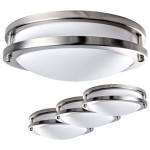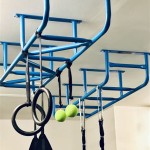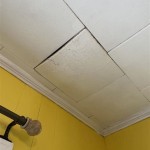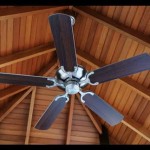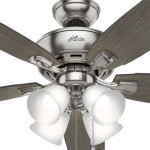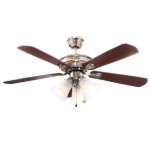How To Hang A Hook From The Ceiling
Hanging hooks from the ceiling can be a versatile way to add functionality and aesthetic appeal to a space. From suspending plants and lighting fixtures to creating decorative displays, ceiling hooks offer a practical solution for utilizing vertical space. However, proper installation is crucial to ensure safety and prevent damage to the ceiling. This article provides a comprehensive guide to hanging hooks from the ceiling, covering the necessary tools, materials, and techniques for various ceiling types.
Before commencing the installation process, it is imperative to understand the type of ceiling being worked with. Common ceiling types include drywall, plaster, wood, and suspended ceilings. Each type requires a specific approach to ensure the hook is securely anchored and the ceiling remains structurally sound.
Drywall ceilings, also known as gypsum board ceilings, are common in residential construction. They are relatively easy to work with but offer limited structural support. Plaster ceilings, often found in older homes, are more durable than drywall but can be brittle and prone to cracking. Wood ceilings, composed of planks or panels, are generally strong and can accommodate heavier loads. Suspended ceilings, also called drop ceilings, consist of tiles or panels suspended from a grid system. These ceilings are primarily designed for acoustic and aesthetic purposes and offer minimal structural support for hanging objects.
Selecting the appropriate hook and hardware is essential for a successful installation. The hook should be chosen based on the weight and size of the object to be hung, as well as the aesthetic preferences of the user. Common hook types include screw hooks, eye hooks, and toggle bolts. Screw hooks are suitable for lighter objects and can be easily installed into wood or drywall with a pilot hole. Eye hooks, featuring a closed loop, are often used for suspending heavier objects or items that require a more secure connection. Toggle bolts are designed for use in hollow ceilings, such as drywall or plaster, and provide a strong anchor point by expanding behind the ceiling surface.
In addition to the hook, it is crucial to select the appropriate hardware for attaching the hook to the ceiling. Screws, anchors, and toggle wings should be chosen based on the ceiling type and the weight of the object to be hung. For drywall ceilings, drywall anchors or toggle bolts are recommended. For plaster ceilings, plaster screws or toggle bolts are preferable. For wood ceilings, wood screws of appropriate length and gauge should be used. For suspended ceilings, specialized ceiling hooks designed for use with the grid system are available.
Planning and Preparation
Before beginning the installation process, it is essential to plan and prepare the work area. This includes identifying the desired location for the hook, gathering the necessary tools and materials, and taking safety precautions to prevent injury or damage. The first step is to determine the precise location for the hook. Consider the weight and size of the object to be hung, as well as the overall aesthetic balance of the space. Use a stud finder to locate ceiling joists, especially when dealing with drywall or plaster ceilings. Attaching the hook to a joist provides the strongest and most secure anchor point.
Next, gather the necessary tools and materials. These may include a stud finder, drill, screwdriver, level, pencil, safety glasses, ladder, and the selected hook and hardware. Ensure that all tools are in good working condition and that the ladder is stable and properly positioned. Before drilling or screwing into the ceiling, wear safety glasses to protect your eyes from debris. It is also advisable to cover the floor beneath the work area with a drop cloth to prevent damage from falling dust or debris.
If working with electrical wiring, such as when installing a hanging light fixture, it is crucial to turn off the power to the circuit before commencing any work. Use a voltage tester to ensure that the wires are not live. If unsure about working with electrical wiring, consult a qualified electrician.
Installation Techniques for Different Ceiling Types
The installation technique will vary depending on the type of ceiling. Each method requires specific tools and materials, and it is important to follow the instructions carefully to ensure a safe and secure installation. For drywall ceilings, the preferred method is to use a toggle bolt. First, drill a hole through the drywall that is large enough to accommodate the toggle wings. Fold the toggle wings and insert them through the hole. Once the wings are fully through the hole, they will spring open behind the drywall. Gently pull back on the bolt to ensure that the wings are securely engaged. Then, tighten the bolt until the hook is firmly attached to the ceiling. Avoid overtightening, as this can damage the drywall. Drywall anchors can also be used for lighter objects. These anchors are inserted into a pre-drilled hole and expand to grip the drywall. However, they offer less support than toggle bolts.
For plaster ceilings, a similar approach to drywall ceilings can be used. However, plaster is more brittle and prone to cracking. Therefore, it is important to drill slowly and carefully, using a drill bit designed for plaster. Use plaster screws or toggle bolts for the best results. When using toggle bolts, ensure that the wings are fully engaged behind the plaster before tightening the bolt. Avoid applying excessive pressure, as this can cause the plaster to crumble. For wood ceilings, the simplest method is to use wood screws. Drill a pilot hole slightly smaller than the diameter of the screw and then screw the hook into the wood. Ensure that the screw is long enough to penetrate the wood deeply and provide a secure hold. If attaching the hook to a ceiling joist, use screws that are long enough to reach through the ceiling material and into the joist itself.
For suspended ceilings, specialized ceiling hooks designed for use with the grid system are available. These hooks typically clip onto the metal grid bars and provide a secure anchor point. To install a ceiling hook in a suspended ceiling, identify the desired location on the grid. Carefully lift the ceiling tile and clip the hook onto the grid bar. Ensure that the hook is securely attached before releasing the tile. Avoid hanging heavy objects from suspended ceiling hooks, as the grid system is not designed to support significant weight. If heavier objects need to be suspended from a suspended ceiling, consider using a wire or cable to attach the object directly to the structure above the suspended ceiling.
Ensuring Safety and Stability
Following installation, it is essential to test the hook for stability and ensure that it can safely support the weight of the object to be hung. Gently pull on the hook to check for any movement or looseness. If the hook feels unstable, tighten the screws or bolts, or consider using a different type of anchor. Before hanging the object, test the hook with a weight that is slightly heavier than the object to be hung. This will help to identify any potential weaknesses or issues with the installation. Observe the hook and ceiling for any signs of stress or strain. If any signs of instability are observed, remove the weight and re-evaluate the installation.
Regularly inspect the ceiling hooks and hardware for signs of wear and tear. Tighten any loose screws or bolts and replace any damaged or corroded components. If the hook is used to suspend heavy objects, it is advisable to inspect it more frequently. Avoid overloading the hook beyond its rated weight capacity. Overloading can cause the hook to fail and result in injury or damage. If the object to be hung is particularly heavy or valuable, consider consulting a professional contractor or engineer to ensure that the installation is safe and secure.
When hanging objects from the ceiling, be mindful of the surrounding area. Avoid hanging objects in areas where they could pose a hazard, such as doorways or walkways. Ensure that the object is securely attached to the hook and that there is no risk of it falling. If hanging plants, use drip trays to prevent water from damaging the ceiling or floor. Consider the potential for the object to swing or move, and ensure that it will not come into contact with walls or other objects. By following these safety precautions, it is possible to create a safe and aesthetically pleasing display using ceiling hooks.
In summary, hanging hooks from the ceiling requires careful planning, preparation, and execution. Understanding the type of ceiling, selecting the appropriate hook and hardware, and following the correct installation techniques are crucial for a successful and safe outcome. Regular inspection and maintenance will ensure the long-term stability and functionality of the ceiling hooks.

How To Hang A Hook From The Ceiling With S

How To Install A Hook In The Ceiling

How To Hang A Hook From The Ceiling With S

How To Install A Ceiling Hook Perfect For Hanging Plants

How To Hang A Hook From The Ceiling With S

5 Ways To Hang Anything From The Ceiling

How To Hang A Plant Easy Diy Large Ceiling Hook Aka Swag Youtube

How To Hang A Plant From The Ceiling Home

How To Hang A Hook From The Ceiling With S

How To Hang A Hook From The Ceiling With S
